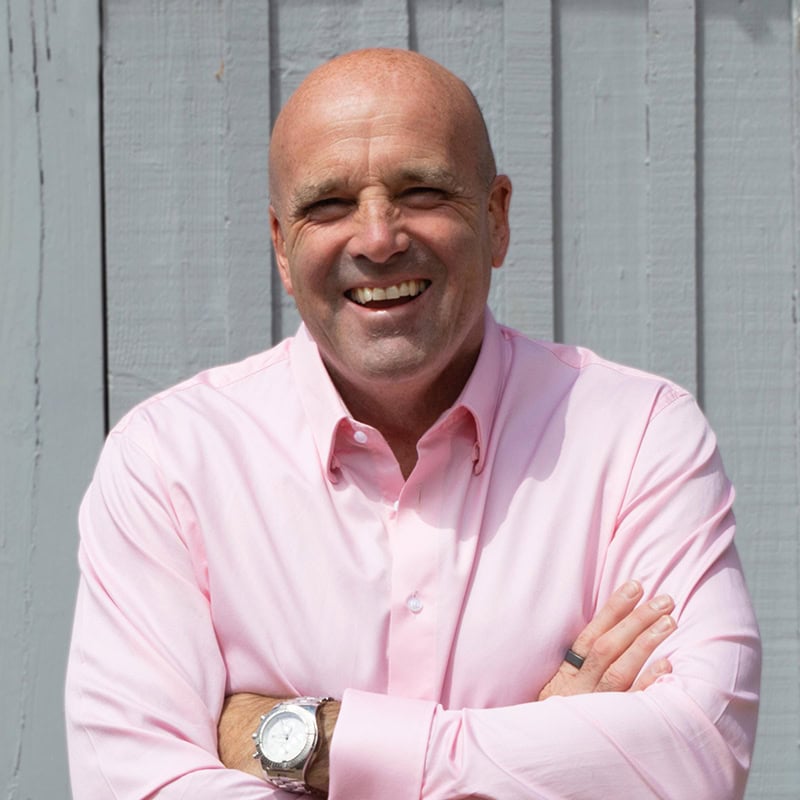If your business is stuck in the middle or late stages of the nail-it phase and struggling to scale, then Lex Sisney is the person you need to hear from. A seasoned business coach and author of Organizational Physics, Lex joins us this week on Mind Your F**king Business to talk about the critical role structure plays in scaling a business.
“Organizational Physics” might sound like an odd title for a business book, but trust us, it’s memorable for a reason. Lex uses timeless principles from the laws of physics to explain the recurring challenges that organisations face—and more importantly, how to overcome them. At the heart of his approach is this: businesses can’t scale effectively without intentionally redesigning their structures to match their goals.
If you’re thinking this is just about org charts or reporting lines, think again. Lex argues that most leaders misunderstand what structure really means. Instead of defaulting to hierarchy, businesses need to align their structure with both short-term and long-term objectives. In this conversation, Lex shares practical advice for how leaders can redesign their organisations to be both efficient and effective—without compromising their core values.
So, whether you’re looking for a fresh perspective on organisational design or struggling with the growing pains of scaling, this is a conversation you don’t want to miss.
What You’ll Learn in This Episode
- Why businesses need organisational physics
- How to understand corporate life cycles
- The critical role structure plays in scaling
- Different types of organisational structures and when to use them
- How to align the structure with your objectives
- Common challenges leaders face and how to overcome them
Who Is Lex Sisney?
Lex Sisney is an organisational wizard—no, seriously. He’s the author of four game-changing business books, including Organizational Physics: The Science of Growing a Business and Designed to Scale: How to Structure Your Business for Exponential Growth. Over the years, Lex has worked with hundreds of CEOs and leadership teams to help them scale without losing their sense of purpose or sanity.
Having founded and led his own fast-growing companies, Lex knows firsthand how frustrating it can be when your organisational structure holds you back. That’s why he developed Organizational Physics, a set of principles grounded in the classic laws of physics. These principles don’t just help businesses make sense of their challenges—they also provide clear, actionable solutions that stand the test of time.
What Is Organisational Physics?
At its core, Organizational Physics is about recognising that businesses are living systems, governed by the same universal principles as everything else in life. One of the key principles Lex highlights is the law of entropy. Left unchecked, systems break down over time—whether that’s your business, your processes, or your team dynamics.
Here’s how Lex explains it: “If your business is a boat, your strategy is where you want to sail. But if there’s a hole in your boat, you’ll sink before you reach your destination. The first step is plugging the leaks.”
Scaling a business isn’t just about hiring better people or working harder. It’s about designing systems and structures that allow you to manage finite resources—time, energy, and money—more effectively.
The Importance of Structure
Here’s where most leaders go wrong: they think “structure” just means an org chart. But as Lex points out, structure is much deeper than reporting lines or departmental divisions.
Structure is how your business is designed to behave. If your current setup is geared toward maintaining the status quo, it will fight against any attempt to innovate or scale. To truly grow, you need to redesign your structure to match the stage of your business and your goals.
Lex breaks this down into a simple rule: “If your strategy or lifecycle stage changes, your structure must change too—or you’ll stay stuck in the past.”
Corporate Life Cycles: Parent Your Business Appropriately
One of Lex’s most insightful ideas is the concept of corporate life cycles. Businesses, like children, require different approaches at different stages. You wouldn’t parent a three-year-old the same way you would a teenager, and yet many leaders try to apply the same strategies regardless of where their company is in its life cycle.
For product businesses, Lex outlines five stages:
- Pilot: Testing the waters.
- Nail It: Figuring out what works.
- Scale It: Rapid growth and expansion.
- Milk It: Maximising profitability.
- Kill It: Knowing when it’s time to pivot or close.
Each stage demands a different structure, focus, and leadership style. Apply the wrong approach, and you risk derailing your progress.
Types of Organisational Structures
Not all structures are created equal. Lex highlights several types of organisational structures, each suited to different stages and challenges:
- Functional Structure: Best for early-stage businesses, dividing teams by job functions like marketing, sales, and operations.
- Divisional Structure: Ideal for larger organisations, grouping teams by products, markets, or geography.
- Matrix Structure: Combines functional and project-based teams, offering flexibility for businesses with complex needs.
- Flat Structure: Minimises hierarchy, often seen in startups or agile environments.
- Network Structure: A web of freelancers, contractors, or partners collaborating toward a common goal.
The key, says Lex, is to align your structure with your strategy. If your business is moving into the scale it phase, for example, a matrix structure might provide the flexibility and cross-functional collaboration needed to handle rapid growth.
How to Redesign Your Structure
Redesigning your organisational structure isn’t just about shuffling people around. It’s a process that requires clarity, courage, and discipline. Lex outlines a few key steps:
- Define Your Objectives: Be clear about what you’re trying to achieve in the next stage of your business.
- Assess Your Current Structure: Identify what’s working and what’s not.
- Align Roles with Strategy: Put the right people in the right roles for the next stage of growth.
- Monitor and Adapt: Structures aren’t set in stone. Regularly evaluate their effectiveness and make adjustments as needed.
Lex’s book Designed to Scale dives deep into this process, offering a detailed roadmap for leaders ready to take the next step.
Common Challenges and How to Overcome Them
Redesigning your structure isn’t always smooth sailing. Common roadblocks include:
- Resistance to Change: People naturally cling to what they know.
- Misaligned Priorities: Short-term fixes often override long-term solutions.
- Lack of Communication: Teams can’t adapt if they don’t understand the why behind the changes.
Lex’s advice? Overcommunicate. “If your team understands the logic and benefits behind the new structure, they’re more likely to embrace it.”
Final Thoughts
Scaling a business is never easy, but with the right structure in place, it’s a lot more manageable. Lex Sisney’s approach combines timeless principles with practical strategies to help leaders align their organisations with their goals.
Whether you’re rethinking your org chart, navigating a corporate life cycle, or just trying to plug the leaks in your boat, Lex’s insights are a must-hear for anyone serious about growth.
Book recommendations
- Marty Cagan – Inspired
- Marty Cagan – Empowered
- The Arbinger Institute – The Outward Mindset
- Shirzad Chamine – Positive Intelligence
Enjoyed the show? Leave Us A Review

